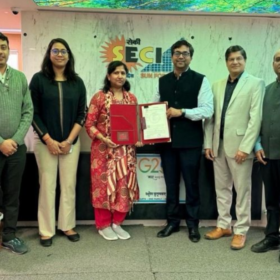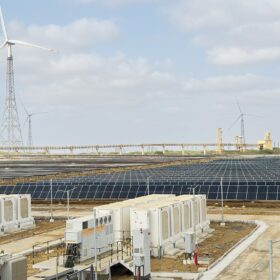Every battery, no matter how efficient, has a finite lifespan. As these batteries begin to retire in large volumes, the world faces a mounting wave of waste. India is at the center of this story. With the rising adoption of EV vehicles and the use of electronics, this is a problem that we cannot afford to overlook. In 2022, India generated around 700,000 metric tonnes of lithium-ion battery waste. By 2040, this figure could rise to over 2 million metric tonnes. Left unaddressed, this mounting waste threatens to derail our sustainability goals and turn into an environmental crisis.
Why battery waste matters
Implementing standard disposal systems for lithium-ion batteries is not as simple as with plastic bottles or organic waste. These batteries contain a mix of metals like cobalt, nickel, lithium, and manganese, which are valuable, but can be dangerous if they enter the environment. If not properly disposed of, they may leach into soil or water, start fires, or expose communities to harmful chemicals.
India faces a growing challenge with both domestic and imported e-waste, including end-of-life batteries that often enter the country through informal channels despite import restrictions. Many developed nations offload this waste due to high recycling costs, leading to unsafe dismantling practices and environmental harm in India. However, this waste contains valuable critical minerals like lithium, cobalt, and nickel, which are essential for India’s clean energy and manufacturing future. With advanced recycling technologies now available domestically, there is a clear opportunity to recover these materials responsibly and strengthen domestic supply chains instead of letting them go to waste.
The risk of becoming the world’s dumping ground
If corrective measures are not taken soon, India could end up being overwhelmed and managing both its growing domestic waste and the inflow of discarded electronics from abroad. Informal recycling practices, such as open burning or acid leaching, make the problem worse by exposing workers and communities to severe health risks while rendering much of the material unrecoverable.
This is not just an environmental issue. It is also an economic and strategic one. Batteries rely on critical minerals, many of which India imports. Allowing these minerals to go to waste, or worse, to cause environmental damage, is a double loss.
A way forward
With collaboration between OEMs, manufacturers, policymakers, and recyclers, India can build a stronger and more efficient system for handling battery waste. Each stakeholder plays a vital role. OEMs and manufacturers can design batteries with recyclability in mind, policymakers can create clear regulations and incentives, and recyclers can deploy advanced technologies to recover valuable materials safely.
Stricter implementation of Extended Producer Responsibility (EPR) will ensure that manufacturers remain accountable for the end-of-life management of their products, driving them to adopt sustainable practices. The introduction of a “Battery Aadhaar” system, a digital identification for batteries will help track batteries throughout their lifecycle, ensuring transparency and preventing them from entering the informal recycling network.
At the same time, promoting “design-to-dismantle” principles will make it easier to disassemble batteries, separate components, and recover materials efficiently. These steps, along with strong enforcement, awareness programs, and investment in formal recycling infrastructure, can transform how India manages its growing battery waste, turning a major challenge into an opportunity for resource recovery and sustainability.
The world is projected to retire over 11 million tonnes of lithium-ion batteries each year by 2030. India may contribute nearly 2 million tonnes by 2030, not only due to electric vehicles, but also because of an exponential level of consumption of consumer electronics and stationary storage. We are not witnessing a problem in a particular sector – but one that encompasses mobility, communications and energy access as a systemic issue.
If we continue to deflect to informal recycling and weak enforcement, this rising tide of waste will lead to us losing decades of gains made in public health, urban improvement, and clean energy modalities. Toxic leakages from batteries can pollute groundwater for decades; fires are being reported from improper disposal at landfill sites in cities across India; and we are missing out on recovering strategic minerals, like cobalt, lithium and nickel, resulting in deeper dependence on imports.
By the same token, however, the opportunity is equally strong. The World Bank states that demand for strategic minerals that are critical inputs for batteries will grow five times by 2050. If India were to establish a systematic approach to collecting, recycling and re-using used batteries, that waste can be transformed into a domestic source for strategic materials. This will not only ease the pressure on sensitive global supply chains, but insulate the economy from turnarounds within those chains.
The views and opinions expressed in this article are the author’s own, and do not necessarily reflect those held by pv magazine.
This content is protected by copyright and may not be reused. If you want to cooperate with us and would like to reuse some of our content, please contact: editors@pv-magazine.com.








1 comment
By submitting this form you agree to pv magazine using your data for the purposes of publishing your comment.
Your personal data will only be disclosed or otherwise transmitted to third parties for the purposes of spam filtering or if this is necessary for technical maintenance of the website. Any other transfer to third parties will not take place unless this is justified on the basis of applicable data protection regulations or if pv magazine is legally obliged to do so.
You may revoke this consent at any time with effect for the future, in which case your personal data will be deleted immediately. Otherwise, your data will be deleted if pv magazine has processed your request or the purpose of data storage is fulfilled.
Further information on data privacy can be found in our Data Protection Policy.